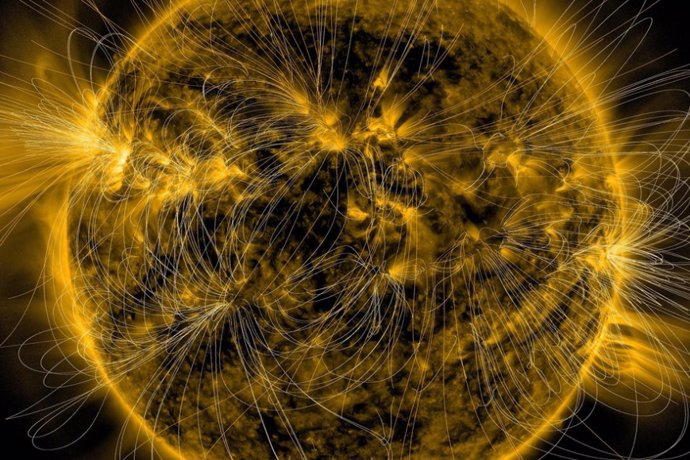This illustration shows the sun’s magnetic fields in an image captured by NASA’s Solar Dynamics Observatory on March 12, 2016. – NASA/SDO/AIA/LMSAL
May 22. () –
Complex calculations on a NASA supercomputer have revealed that the Sun’s magnetic field is generated at about 32,000 kilometers beneath the surface of our star.
The finding contradicts previous theories, which suggest that the phenomenon has deep origins: it begins more than 210,000 kilometers below the surface of the sun. The research is published in the journal ‘Nature’.
The new discovery not only helps us better understand the dynamic processes of our sun, but could also help scientists more accurately forecast powerful solar storms. Although strong solar storms this month released beautiful, expanded views of the northern lights, similar storms can cause intense destruction, damaging satellites in Earth orbit, power grids and radio communications.
“Understanding the origin of the Sun’s magnetic field has been an open question since Galileo and is important for predicting future solar activity, such as flares that could impact Earth,” says study co-author Daniel Lecoanet of Northwestern University. “This work proposes a new hypothesis for how the sun’s magnetic field is generated that better matches solar observations and, we hope, could be used to make better predictions of solar activity.”
The research team developed new state-of-the-art numerical simulations to model the sun’s magnetic field. Unlike previous models, the new model takes into account torsional oscillations, a cyclical pattern of how gas and plasma flow in and around the sun. Since the sun is not solid like the Earth and the Moon, it does not rotate as a single body. Instead, its rotation varies with latitude. Just like the 11-year solar magnetic cycle, Torsional oscillations also undergo an 11-year cycle.
“Because the wave has the same period as the magnetic cycle, it has been thought that these phenomena were related,” says Lecoanet. it’s a statement. “However, the traditional ‘deep theory’ of the solar magnetic field does not explain where these torsional oscillations come from. One intriguing clue is that torsional oscillations only occur near the surface of the sun. Our hypothesis is that the magnetic cycle and torsional oscillations are different manifestations of the same physical process.”
With a better understanding of the sun’s dynamo, researchers hope to improve solar storm forecasts. When solar flares and coronal mass ejections are launched toward Earth, they can severely damage electrical and telecommunications infrastructure, including GPS navigation tools. This month’s recent solar storms, for example, They deactivated the navigation systems of agricultural equipmentright in the peak planting season.
“While the recent solar storms were powerful, we are concerned about even more powerful storms like the Carrington event“, says Lecoanet. “If a storm of similar intensity were to hit the United States today, it would cause an estimated damage of between 1 and 2 trillion dollars. “Although many aspects of solar dynamics remain a mystery, our work makes great strides in solving one of the oldest unsolved problems in theoretical physics and opens the way to better predictions of dangerous solar activity,” she concludes.
















Add Comment